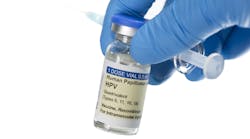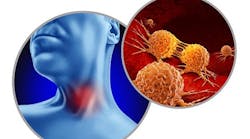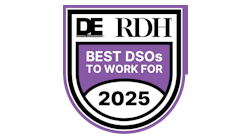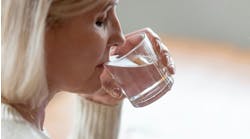According to the Centers for Disease Control and Prevention (CDC), an average of 20,000 cases of oropharyngeal cancer (OPC) per year are attributed to some strain of the human papillomavirus (HPV).1 Historically, cancers of the head and neck have been associated with alcohol and tobacco use as the primary etiological factor, but during the mid-2000s, diagnosed OPC increased significantly with evidence showing that 60%–90% of cases were attributable to HPV strains 16 and 18.2 Here, we will review statistical evidence on the rates of HPV and OPC and the literature supporting the benefit of HPV vaccination.
You may also be interested in ... Extra- and intraoral tips to screen for oral cancer
Extraoral and intraoral examinations have been a mainstay for dental hygienists screening patients for clinical markers of OPC. Hygienists are in a unique position to educate patients on risk factors and prevention.3 With the frequency patients are treated in a dental office and along with the educational skill sets dental hygienists possess, it is sensible that these oral health-care specialists could be providing information on HPV-associated OPC to patients eligible for vaccination.2,3
Although a causative link between strains of HPV and OPC has not been definitively established, scientific evidence has shown that HPV infection can be prevented with vaccination.3 Despite the proven prophylactic benefit, rates of those receiving the complete vaccine series have been historically low.3 This could be due to lack of education, poor provider recommendation, and ethical or cultural concerns, to name a few.2 By empowering dental professionals to have constructive conversations with their patients and encouraging interprofessional collaboration, the opportunity for patients to receive vaccination could potentially increase as rates of HPV-associated OPC across the nation decrease.
HPV and OPC statistics
With the HPV vaccine being a preventive means against infection and the development of cervical cancer in women, it’s important to consider the benefits of vaccines for men as well.3 The development of HPV in men places them at risk for genital cancer as well as cancer of the oropharynx.4 The average number of cancer cases affecting the oropharynx attributed to HPV is almost five times higher in men than in women.1 Although several strains of HPV exist and most often resolve independently, vaccines can protect against specific strains of HPV that have been linked to these cancers.4
Currently, the age range for vaccine administration in both men and women is from 9 to 26.2 For those between the ages of 9 and 11, two doses of the HPV vaccine are recommended.4 Teenagers and adults up to age 26 who have not received the vaccine or did not complete their series should receive three doses.5
Research has connected HPV to the development of cancers in the head and neck, which in the last few years has surpassed cervical cancer (an already understood incidence from HPV risks) in being the most common HPV-associated cancer in the United States.3,6 When discussing OPC, it is important to distinguish between HPV-negative OPC and HPV-positive OPC, as the former is closely related with alcohol and tobacco use while the latter is associated with sexual transmission.3 HPV-negative OPC rates have been declining, but the rates of HPV-positive OPC in younger populations has been increasing, which is why dental professionals are in a pivotal spot to educate and recommend HPV prevention immunization to their patients.3,4
With 70% of OPC caused by some strain of HPV and the proven statistical benefit of vaccination, oral health specialists are encouraged to take a proactive role in recommending immunization to their patients.1 Due to more than 90% of oral HPV infections being sexually acquired, dental hygienists may feel uncomfortable discussing risk factors, prevention, and vaccination with patients and their guardians.7
You may also be interested in ... Having a difficult HPV conversation with dental patients
As studies show poor patient-provider communication is one of the reasons behind low vaccine administration among young adults, it is imperative that oral health-care professionals collaborate with other health-care disciplines such as pediatricians and primary health-care providers.3 This will ultimately create a referral network to help patients understand the link between HPV and OPC. Within the educational setting, interprofessional collaboration can be the impetus for dental hygiene students and students from other health-care disciplines to provide screenings and information on the correlation between HPV and OPC to high school and college students.6 This would foster an excellent environment of professional socialization not only to get dental hygiene students comfortable discussing this topic with patients, but also give students from various disciplines a chance to work together as a team.
Breaking down HPV
HPV is comprised of various strains, with oncogenic strains 16 and 18 being associated with more than 80% of OPCs.8 The development of this type of cancer has historically been attributed to long-term tobacco and alcohol use. However, research is showing that cancers of the oral cavity are also a result of high-risk HPV.9 Since dental professionals are one of the most frequently visited health-care providers, they can use this information to educate, advocate, and provide a means for prevention of certain oral cancers in their patients.2
Currently, in the entry-level curriculum, dental hygienists learn about the risk factors for oral cancer, clinical signs to look for in the mouth, and how to perform intraoral and extraoral screenings. Although this secondary method of prevention is critical, giving oral health-care providers a greater opportunity for hands-on experience in their education will be imperative as they transition to the role of primary prevention specialists.3
Prevention is the key component in combatting the incidence of HPV-associated OPC. Numerous studies have shown the effectiveness of HPV vaccines for patients who are eligible.7,8 Barriers to the vaccine will be inevitable, so it’s critical that hygienists are culturally competent, cognizant of the patient populations they are educating, and respectful of vaccine decisions.2
Dental hygienists have a responsibility to provide their patients with the highest level of care, which includes screening for clinical signs of oral cancer, educating patients about risk factors, and offering recommendations for prevention.3 Just as hygienists are obligated to assess patients for clinical markers of periodontal disease and educate accordingly, they are also expected to follow the same protocol for oral cancer.
Editor's note: This article appeared in the July 2023 print edition of RDH magazine. Dental hygienists in North America are eligible for a complimentary print subscription. Sign up here.
References
- HPV and oral cancer. Centers for Disease Control and Prevention. Division of Oral Health, National Center for Chronic Disease Prevention and Health Promotion. Updated February 24, 2022. Accessed May 4, 2022. https://www.cdc.gov/oralhealth/fast-facts/oral-cancer-and-hpv-vaccine/
- Arnell TL, York C, Nadeau A, et al. The role of the dental community in oropharyngeal cancer prevention through HPV vaccine advocacy. J Cancer Educ. 2019;36(2):299-304. doi:10.1007/s13187-019-01628-w
- Cotter JC, Wilson KJ, Mallonee LF. Impact of HPV immunization training on dental hygiene students’ attitudes and confidence regarding HPV preventive education. J Dent Educ. 2020;84(1):88-93. doi:10.21815/JDE.019.164
- Simon S. More teens getting HPV vaccinations. American Cancer Society. August 27, 2018. Accessed May 6, 2022. https://www.cancer.org/latest-news/more-teens-getting-hpv-vaccinations.html
- McDowell S. ACS updates HPV vaccination recommendations to start at age 9. American Cancer Society. July 8, 2020. Accessed May 6, 2022. https://www.cancer.org/cancer/latest-news/acs-updates-hpv-vaccination-recommendations-to-start-at-age-9.html
- Guadiana D, Kavanagh NM, Squarize CH. Oral health care professionals recommending and administering the HPV vaccine: understanding the strengths and assessing the barriers. PLoS ONE. 2021;16(3):e0248047. doi:10.1371/journal.pone.0248047
- Timbang MR, Sim MW, Bewley AF, Farwell DG, Mantravadi A, Moore MG. HPV-related oropharyngeal cancer: a review on burden of the disease and opportunities for prevention and early detection. Hum Vaccin Immunother. 2019;15(7-8):1920-1928. doi:10.1080/21645515.2019.1600985
- Näsman A, Du J, Dalianis T. A global epidemic increase of an HPV-induced tonsil and tongue base cancer – potential benefit from a pan-gender use of HPV vaccine. J Intern Med. 2020;287(2):134-152. doi:10.1111/joim.13010
- Walker KK, Jackson RD, Sommariva S, Neelamegam M, Desch J. USA dental health providers’ role in HPV vaccine communication and HPV-OPC protection: a systematic review. Hum Vaccin Immunother. 2019;15(7-8):1863-1869. doi:10.1080/21645515.2018.1558690






